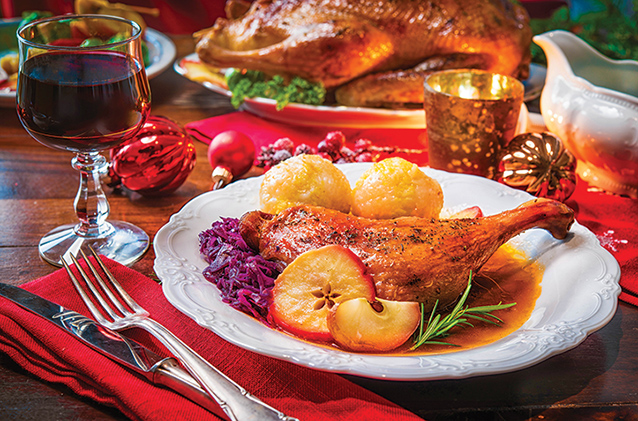Decorations and shopping draw much of the attention come the holiday season, and rightfully so. But many people’s fondest holiday memories occurred around the dinner table during meals with friends and family.
Holiday foods tend to be rich, flavorful and time-consuming to prepare. However, all the effort is usually worth the satisfied smiles on the faces of loved ones.
Planning holiday meals is challenging, and hosts often doubt if they have enough food for everyone. No one wants guests to leave feeling hungry, nor do they want to have tons of leftovers, much of which will inevitably end up in the trash. Determining how much food to serve involves figuring out a few key items, including the mix of guests (ratio of children, men and women), the length of the occasion, the timing of the event, and the type of meal one plans to serve. For example, if the holiday gathering is an after-dinner cocktail party, hosts can get away with offering very little food. However, hosts of holiday dinners have a lot more food to prepare.
To get started, consider these general guidelines, courtesy of Allrecipes.com and The Spruce, a home living resource.
• Think about which foods you plan to serve. Popular foods tend to go more quickly than other items, so serve more than the general portion guidelines suggest. Shellfish appetizers, roasted or mashed potatoes, wings, and slices of rich meat are examples of popular fare.
• The more foods you offer, the smaller the portion sizes can be. But because guests will likely want to try all the offerings, expect the average person to consume more food per individual when several foods are offered.
• Most people will eat two to three portions each of appetizers or snacks. In fact, appetizers (for a hungry crowd) may be consumed in greater abundance than subsequent courses.
• Average portion sizes for each guest include: 3 ounces of dips; 3 ounces of salad; 6 ounces of meat or main entrée; 5 ounces of starch; and 11⁄2 pieces of dessert. These estimates can be used to calculate how much food will be needed.
• Think about adding “safety” items to the menu that can be pulled out in a pinch and don’t require much prep work. These can include cheese and crackers, extra bread, nuts, olives, or pretzels.
Hosts who are overly concerned that guests may go overboard can tame portion sizes by hiring servers who can oversee buffet lines. Otherwise, serve guests plated meals directly from the kitchen, from which hosts can dole out the right amount of food to ensure everyone gets enough to eat.





Leave a Comment
Your email address will not be published. Required fields are marked with *